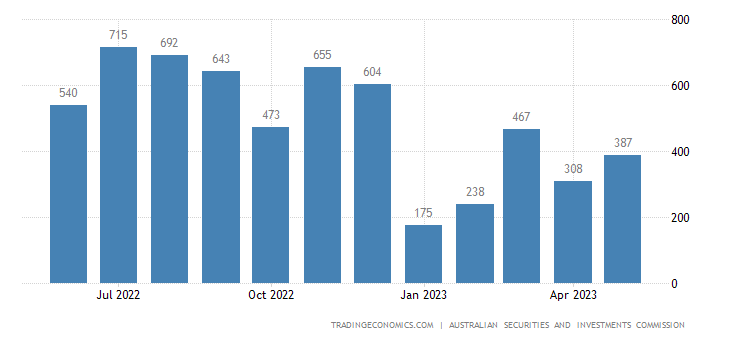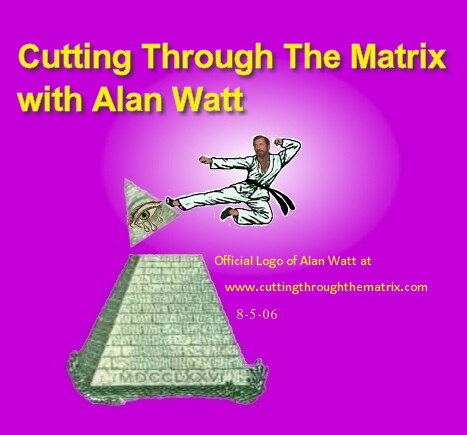The Mandate to Flood Lismore…Floods are no Accident these days…this is the plan – Mick Raven
Objective No:1 Flood out The Anti-Vaxxing Ferals of Lismore to make way for Smart City Lismore 2036!
2022 eastern Australia floods – Wikipedia
On 30 March (2022), after the all-clear had been given in Lismore less than 24 hours prior, an evacuation order was again issued for those in low-lying areas of the city as the levee overflowed as the Wilsons River began to rise (expected to peak at 12 metres) and the city centre flooded.
Northern Rivers flood buyback scheme offered to those with destroyed and damaged homes – ABC News
27 Oct 2022
“We know that disasters are expected to become more frequent, and more severe due to climate change, and that’s why we’re working with the NSW government to develop practical solutions to protect lives and livelihoods,” Prime Minister Anthony Albanese said.
The worst affected local government areas included Lismore, where more than 600 homes were severely damaged — including 332 homes in the Richmond Valley and 250 in Tweed.
Greenfield Housing Code Planning
https://www.planning.nsw.gov.au
The Greenfield Housing Code is intended to speed up the delivery of new homes in greenfield areas
(new release areas) to house a growing population and improve affordability.
Greenfield Housing Code Area Map – Lismore
Lismore Regional City Action Plan 2036
Research responses to Lismore’s hazards and climate change to inform resilience and adaption strategies, including future zoning and planning controls
Develop an integrated place-based transport network that delivers a connected Lismore
Encourage active transport and advances in transport technology
– (Active Transport...your feet! – Mick Raven)
Lismore City Council has set a target to generate 100 per cent of its electricity needs from renewable energysources by 2023.
– (Na Flood’em out! – Mick Raven)
Transport:
Lismore’s city centre crisscrosses the Bruxner Highway and Bangalow, Kyogle and Wyrallah roads. It includes a well organised network of laneways and streets, supporting a large pedestrian catchment. However, safety, amenity and connectivity improvements within the city centre and its surrounds could reduce vehicle dependency and enhance active transport modes, such as walking and cycling.
Emerging transport technologies and trends such as electric bikes, autonomous vehicles and ride sharing offer compelling alternatives to private car use that can make better use of transport investments to connect communities, transform service delivery and enhance the customer experience.
Development of an active transport network, identifying the missing links and initiatives for behaviour change to support more sustainable travel options.
Adopt changing transport technology to promote greater accessibility and connectivity.
Lismore is at the centre of the Northern Rivers diverse agricultural landscape. Key industries include beef, fruit, nuts, sugarcane, dairy, poultry and cut flowers as well as emerging opportunities in medicinal cannabis and organic agricultural production.
A high proportion of products are transported by road to major processing centres outside the region to be exported to domestic and international markets. A consolidated facility could provide an opportunity to advance and diversify the sector.
Lismore Regional Airport and associated aviation centre, as well as a future rail freight terminal near Casino, could make Lismore and the Northern Rivers an enterprise gateway for agriculture and agribusiness.
A $1.8 million upgrade of the Lismore Regional Airport and aviation centre together with the $4.4 million installation of an instrument landing system will attract more general aviation services, training facilities, and could also cater for agricultural freight. – (Yep cancel road Transport – Mick Raven)
Improvements will include a new runway, new light aircraft taxiways, a concrete helipad and updated facilities and amenities.
Result: No more Private Car use allowed! – Mick Raven
Lismore Smart City Project
https://www.ecorenewableenergy.com.au
Location and a brief description of the project:
The Lismore Smart City project is an initiative by the Lismore City Council in New South Wales, to transform the city into a more sustainable and livable place using technology and innovation. The project is focused on three key areas: energy, transport, and data.
Key features and technologies used:
Solar power generation: The project has installed over 800 kW of solar panels on public buildings and community facilities, which generates renewable energy and reduces the city’s carbon footprint.
Electric vehicle charging infrastructure: Lismore has installed electric vehicle charging stations throughout the city, making it easier for residents and visitors to use electric vehicles.
Smart lighting: The project has installed energy-efficient LED lighting in public spaces, which is remotely managed and can be adjusted based on usage patterns and weather conditions.
Data collection and analysis: Lismore is using data analytics to monitor and optimize energy usage, traffic flow, and public services.
Waste management: The project has implemented a smart waste management system, which uses sensors to monitor waste levels in public bins and alerts waste management teams when bins need to be emptied.
Community engagement: The project has engaged with the local community to raise awareness about the benefits of smart city technologies and encourage residents to adopt sustainable practices.
Smart cities
2018
According to the Smart Cities Council Australia New Zealand (SCCANZ) there are three core capabilities which define smart cities:
First, a smart city collects information about itself through sensors, other devices and existing systems. Next, it communicates that data using
wired or wireless networks. Third, it “crunches” (analyses) that data to understand what’s happening now, and what’s likely to happen next.
Smart cities are those which leverage innovative technologies to ‘enhance [the] quality and performance of urban services, to reduce costs and
resource consumption, and to engage more effectively and actively with its citizens’. They deploy ‘smart devices, sensors and software’ to
equip existing infrastructure with ‘the equivalent of digital eyes and ears’ enabling ‘more efficient and effective monitoring and control of our
energy and water systems, transportation networks, human services, public safety operations – basically all core government
functions
Proliferation of IoT technologies
Although internet coverage, reliability and speed in Australia requires significant improvement, its expansion in recent decades has been sufficient to support the proliferation of internet-enabled devices that are able to interact and transfer information with other devices, people or automated systems. This phenomenon is known as the ‘internet of things’ (IoT) and comprises ‘sensors, monitors, video surveillance, and radio frequency identification tags, all communicating with each other to enhance infrastructure capability and resilience, and capturing volumes of data
In transport, smarter vehicles, trains and public transport systems will sense their surrounding environments, and slow down or stop without human intervention in emergency situations. On-board public transport, a range of GPS, position fixing, video surveillance, and communications equipment will provide accurate and reliable multi-modal real-time passenger information
Electric vehicle charging infrastructure will also be integrated into a smart grid network, providing consumers with access to sustainable and equitable forms of connected mobility. A combination of technologies and sensors will also improve safety and security by permitting operators to remotely disable or enable a public transport service in the event of a security threat
Fostering quality open data
A tangible example of how data can be used to inform better urban development and city management can be seen in the Townsville City Council ‘Smart Water Pilot’. The council collected data about daily water usage from digital water meters around their community and communicated this to residents in close to real time, driving behavioural change to conserve water.
Committee conclusions
Evidence indicates that a number of elements are fundamental to the generation of smarter cities. They include fast and reliable internet connectivity, the proliferation of IoT technologies, interoperability standards, and data sharing and collection principles.
Fast and reliable internet is indispensable to the creation of smart cities and is the basis of the modern, knowledge economy.
Although internet connectivity is reliable in Australia’s cities; the Committee received evidence that there is ample scope to improve internet speed.
– (5G. the real 5G coming asap – Mick Raven)
The Truth – Mick Raven
What is cloud seeding?
2 June 2004
Cloud seeding is a procedure to attempt to artificially generate precipitation from clouds. It may attempt to produce rain or snow when
none would fall naturally, or it may attempt to increase the amount of rain or snow which falls over a particular area.
Minister for Sustainability, Climate Change and Innovation
The Honourable Andrew McNamara
Minister for Sustainability, Climate Change and Innovation, Andrew McNamara, said the Queensland Government is investing $7.6 million over four years in the cloud seeding research project.“Cloud seeding aims to enhance the amount of rain falling from rain-bearing clouds,” Mr McNamara said.
“Results of the trial will determine whether cloud seeding is suitable for use in South-east Queensland.
The project is being managed by the Queensland Climate Change Centre of Excellence within the Environmental Protection Agency, working closely with the Bureau of Meteorology which is providing radar technology and weather pattern expertise.
Australian Rain Technology
https://www.australianrain.com.au/
2022
Australian Rain Technologies (ART) is pioneering statistical analysis to enable commercially effective decision-making in the area of rainfall enhancement. This statistical methodology is being applied to ART’s own ATLANT™ rainfall enhancement through ionisation technology. However it is equally applicable to chemical cloud-seeding
In particular the University of Wollongong has applied this analytical method across multiple trials of ART’s ATLANT™ ’ rainfall enhancement through ionisation technology over 10 years in Australia and Oman.
Harmless to humans – Ionisation is entirely harmless to humans and vegetation. Its sole impact on the atmosphere is to enhance rainfall. If severe weather is forecast the ATLANTTM units can be turned off to avoid any worsening of such conditions.
In all cases rainfall enhancement was identified at high levels of statistical confidence. Enhancement ranged from 10 per cent (90 per cent statistical confidence level) in three trials in South Australia
We have spent 10 years putting together a world-leading spatial statistical and econometric evaluation team as we pursued our path to rigorous demonstration of efficacy. We have learnt from 70 years of frustrating
and often contradictory traditional weather modification trials since World War II.
Continuous operation, minimum power requirement – The Atlant Technology runs continuously (outside extreme weather events), consuming no more power than a television set.
Flexible operations by remote control.
Low-cost installation and easily relocated. Virtually zero-cost operation.
ATLANT technology
The ATLANT technology introduces ionized aerosols into clouds,
accelerating the collision of cloud droplets and the formation of rainfall sized droplets.




































































Leave a comment
Comments 0